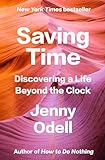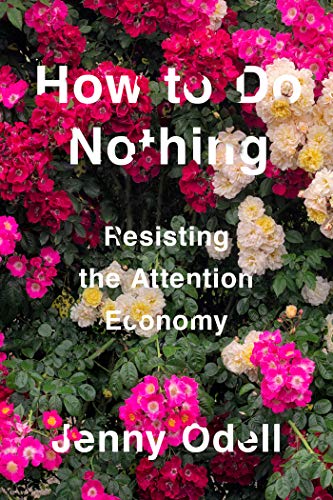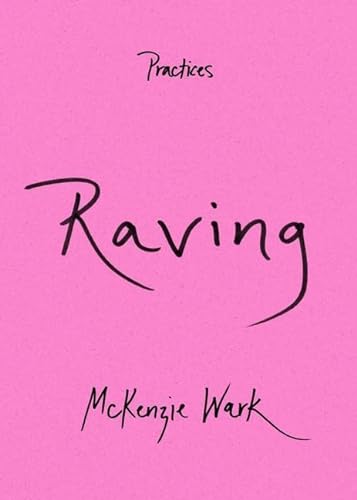We wouldn’t dream of abandoning our vast biannual Most Anticipated Book Previews, but we thought a monthly reminder would be helpful (and give us a chance to note titles we missed the first time around). Here’s what we’re looking out for in March:
March
 Francisco by Alison Mills Newman
Francisco by Alison Mills Newman
Though it garnered plaudits from Toni Morrison when it was first published in 1974, Newman’s autobiographical novel has long been out of print. Now, a reissue by New Directions—with a new foreword by Saidiya Hartman—promises to introduce a new generation of readers to Newman’s innovative and genre-bending story, which draws on the author’s experience as a young actress in 1960s Hollywood. —Thom Beckwith
 The Fifth Wound by Aurora Mattia
The Fifth Wound by Aurora Mattia
In her new novel, the Mattia reinvents the roman à clef with a magical realist memoir that puts the dusty genre of autofiction to shame. Sifting from multiple narratives—and dimensions—The Fifth Wound is a romance, a meditation on transphobic violence, and a speculative tale of time travel, ecstatic visionaries, and mystical union. Transcending the limiting confines of not just society, but reality as well, and Mattia’s novel promises the reader an experience that recalibrates simplistic notions of truth and fiction, reality and illusion. —Ed Simon
 Saving Time by Jenny Odell
Saving Time by Jenny Odell
I love books that force me to recognize or reconsider the structure of existence—and Odell’s book does just this, in a way that’s both enlightening and generative. Her previous book, How to Do Nothing, was a runaway hit about what happens when we subvert the temporal expectations that are placed upon us: “Letting go of one overwhelming rhythm, you invite the presence of others. Perhaps more important, you remember that the arrangement is yours to make.” Odell demonstrates how it’s never too late to save the time we have left. —Nick Ripatrazone
 The Best of Everything by Rona Jaffe
The Best of Everything by Rona Jaffe
In 1958, at the age of 27, Rona Jaffe published her first novel, a revolutionary portrait of three young women employed at a New York publishing house. Renowned for its frankness and honesty, particularly in its depictions of sexual harassment, The Best of Everything is, per Michele Moses, “what you would get if you took Sex and the City and set it inside Mad Men’s universe.” Now, for its 65th anniversary, Penguin Classics is reissuing the novel, complete with a new introduction by New Yorker staff writer Rachel Syme, who is the perfect voice to prime us for a retro romp through postwar New York and its attendant glitzy patina. —TB
 Raving by McKenzie Wark
Raving by McKenzie Wark
Wark’s entry into Duke University Press’s Practices series, which spotlights the activities that make us human, invites us into the underground queer and trans rave scene of New York City. A bombastic collision of sound and movement, raving is, to Wark, the ideal activity for “this era of diminishing futures.” An avid raver herself, she blends academic analysis with her own first-hand accounts, all relayed with sensual, staccato prose. “Some come to serve looks; some come to leave their sweat on the dance floor,” she writes. “I’m the latter kind. I want to be animate and animated on the floor.” —Sophia M. Stewart
 Still Life with Bones by Alexa Hagerty
Still Life with Bones by Alexa Hagerty
From 1960 to 1996, more than 200,000 Guatemalans were killed, and tens of thousands more disappeared, after an American-backed coup gave rise to a steady march of genocidal dictators. Decades later, anthropologists like Alexa Hagerty are working to exhume and examine the dead, piecing together their bodies and their stories in an urgent but potentially quixotic quest for resolution, and attempting to bring a sense of humanity to the forensic sciences. —Evan Allgood
 How to Think Like a Woman by Regan Penaluna
How to Think Like a Woman by Regan Penaluna
In her first book, journalist Penaluna, who has a PhD in philosophy, explores the oft-forgotten and under-taught feminist philosophers of the seventeenth and eighteenth centuries: Mary Astell, Damaris Masham, Mary Wollstonecraft, and Catherine Cockburn. Blending biography, criticism, and memoir, Penaluna explores the lives and beliefs of these thinkers, as well as the ways women—past and present—have been devalued within philosophy, academia, and history. How to Think Like a Woman serves as an alternate philosophical canon, where women and their intellect are deeply and rigorously examined. —Carolyn Quimby
 Y/N by Esther Yi
Y/N by Esther Yi
“Y/N,” short for “[Your/Name],” refers to a type of fanfiction that allows readers to insert their own names into brackets in the story, so as to imagine themselves in romantic scenarios with popular idols. In Esther Yi’s debut novel, our narrator devotes herself to writing fanfic about a K-pop star named Moon. When Moon suddenly retires and retreats from the spotlight, the narrator embarks on a transnational search that unveils the absurd innards of a Korean entertainment company, as well as the loneliness of modern life and the various fantasies we enact to try to escape it. Yi, a Leipzig-based writer, has earned comparisons to Elif Batuman, Thomas Pynchon, Yoko Tawada, and Marie NDiaye. —Jenny Wu
 Biography of X by Catherine Lacy
Biography of X by Catherine Lacy
With a title that recalls both Alex Haley’s biography of Malcolm X and Gertrude Stein’s consideration of her partner Alice B. Toklas, Lacey audaciously explores the contingencies of identity, memory, and history in her latest experimental novel. Lacey’s novel takes place in an alternative history where the American South separated from the United States and was governed as a fascist theocracy only recently being reabsorbed into the wider nation. Ostensibly The Biography of X is about the titular unknown, a celebrated but mysterious artist, and her widow’s account of that life as much as can be assembled. But with cameos by such twentieth-century luminaries as Sontag and Bowie, the novel is also a biography of American art and theory which understands that sometimes history is best understood at a slant. —ES
 The Last Catastrophe by Allegra Hyde
The Last Catastrophe by Allegra Hyde
This collection of 15 stories by the author of Eleutheria continues Hyde’s interest in humanity grappling with climate change. Alexandra Kleeman writes that these speculative stories are “dazzling, inventive, and glinting with dark humor.” Spaceships, AI, zombies, and body-switching abound. I, for one, am most excited to read the story about the girl growing a unicorn horn! —Edan Lepucki
 The New Earth by Jess Row
The New Earth by Jess Row
A century which began with 9/11, and has so far seen economic collapse, a ground war in Europe, a global pandemic, and the rise of neo-fascism is painfully interesting. Jess Row’s latest novel interlays these interesting times on a family drama among the privileged Wilcoxes of the Upper East Side, from 2000 to 2018. The global perspective becomes synonymous with the vantage point of daughter Winter Wilcox, who on the eve of her wedding must grapple not just with her estranged family, but the ways in which her personal tragedies from years coincide with both parental secrets and historical injustices. “Disguising your origins is a deeply American impulse,” Row wrote in 2014, “but that doesn’t make it any less compromising,” a theme heartily interrogated in The New Earth.” —ES
 Ada’s Room by Sharon Dodua Otoo, translated by Jon Cho-Polizzi
Ada’s Room by Sharon Dodua Otoo, translated by Jon Cho-Polizzi
Otoo’s debut novel is about four women, all with the same name: Ada, a mother in fifteenth-century West Africa; Ada Lovelace, the real-life programmer in Victorian England; Ada, a prisoner in a concentration camp in 1945; and Ada, a young Ghanian woman in present day. As Otoo connects their narratives across centuries, the linear confines of history break down and a profound sorority comes into focus. R.O. Kwon calls this one “thrillingly, astonishingly original.” —SMS
 Bottoms Up and the Devil Laughs by Kerry Howley
Bottoms Up and the Devil Laughs by Kerry Howley
In her newest book, Howley (Thrown) expands on her 2017 New York magazine piece about whistleblower Reality Winner, who leaked top-secret information about Russian interference in the 2016 United States presidential election to The Intercept. Exploring what it means to live in the inescapable and oppressive surveillance surveillance age, the book is what Lydia Kiesling calls “a beautiful, stylish, nuanced, and empathetic work of art” that serves as a “a necessary expansion and corrective to established narratives of decades of American overreach and cruelty.” —CQ
 Stay This Day and Night with Me by Belén Gopegui (translated by Mark Schafer)
Stay This Day and Night with Me by Belén Gopegui (translated by Mark Schafer)
The newest novel by Spanish author and screenwriter Gopegui follows two new, unlikely friends—retired mathematician Olga and robotics student Mateo—as they scheme to win a Google-sponsored spot at a prestigious technology-training program. As they wait for news, they find themselves considering, debating, and questioning the tenuous relationship between humanity and technology. Adrienne Celt calls the novel “a thrillingly unclassifiable book” that is “a study of empathy and human connection in a time of algorithms and tech giants, extending curiosity not only towards her very human characters, but also towards the corporate machinery that governs their lives, and the lives of her readers.” —CQ
 Brother & Sister Enter the Forest by Richard Mirabella
Brother & Sister Enter the Forest by Richard Mirabella
After their lives were forever changed by an act of violence, siblings Justin and Willa have spent years lovingly estranged—and dealing with their trauma in wildly different ways. When Justin shows up on Willa’s doorstep, she fears that he will unravel the little peace and stability she has built. Threading the dual timelines of the past and the present, Mirabella’s debut novel explores queerness, mental illness, trauma, and love. Paul Lisicky says: “There are so many things to love about Richard Mirabella’s outstanding Brother & Sister Enter the Forest but what I love best is its meticulous attention to atmosphere, by which I mean the music of the book, the soul of it, expressed in its incisive descriptions, its cadence, its dark and tender heart.” —CQ
 Confidence by Rafael Frumkin
Confidence by Rafael Frumkin
I’ve been waiting for another novel by Frumkin since the moment I finished reading his criminally-underrated debut The Comedown in 2018. His newest follows teenagers Ezra and Orson who meet at Last Chance Camp, a pre-juvenile detention program. The pair bond over their penchant for petty crimes, schemes, and scams—and spend the next few years as friends, lovers, and, most importantly, business partners. When the two decide to found a wellness company (a perfect scam!), their success and cult-like following puts them on the radar of the people who can take them down for good. Andrew Ridker says: “Frumkin has done it again in this fiendishly funny takedown of the American Dream. Confidence is a Gatsby for our golden age of grifters.” —CQ
 The Great Reclamation by Rachel Heng
The Great Reclamation by Rachel Heng
In her newest novel, Heng (Suicide Club) creates a sweeping portrait of Ah Boon, a young boy born to a fishing village, as he watches his country change amid war, occupation, and modernization. Quiet and gentle, Ah Boon has a borderline-magical intuition and gift: the ability to find moveable and resource rich islands that no one else can. In the post-war period, Ah Boon’s gifts run up against the nation’s interests, and he must decide who and what he wants to be. Elizabeth McCracken writes: “How does Rachel Heng write about the imaginary and the historical in a way that they are both equally believable and moving and strange? I don’t know how she does it, but this book is a marvel.” —CQ
 Happily: A Personal History—with Fairy Tales by Sabrina Orah Mark
Happily: A Personal History—with Fairy Tales by Sabrina Orah Mark
Sharing its name with the Paris Review column she’s written since 2018, Mark’s (Wild Milk) debut memoir-in-essays uses fairy tales—their plots, lessons, and wisdom—to explore themes of motherhood, racism, antisemitism, illness, and marriage in her own life. Rebecca Solnit blurbs: “These are fairy tales that are essays on fairy tales but also incantations, confessions, news analysis, personal history, and reminders that fairy tales are dainty things capable of doing a lot of heavy lifting of the contents of our imaginations and the aches of our hearts.” —CQ
 Women We Buried, Women We Burned: A Memoir by Rachel Louise Snyder
Women We Buried, Women We Burned: A Memoir by Rachel Louise Snyder
Creative writing professor and writer Snyder (No Visible Bruises) has spent years writing about domestic violence and other issues that negatively impact women—and now she shares her own story. In the wake of her mother’s death when she was eight years old, Synder spent years in a cult-like Evangelical household before becoming a teenage runaway who fought to survive. Her coming-of-age story is one of fury, persistence, and, ultimately, hope. Tayari Jones says, “Women We Buried, Women We Burned reminds me of opera, with its beautiful sadness and artistic triumph. The hope contained on these pages is hard won, and all the more precious due to the struggles from which it emerges.” —CQ
Want to know about the books you might have missed? Then go read our most recent book preview. Want to help The Millions keep churning out great books coverage? Then sign up to be a member today.





















